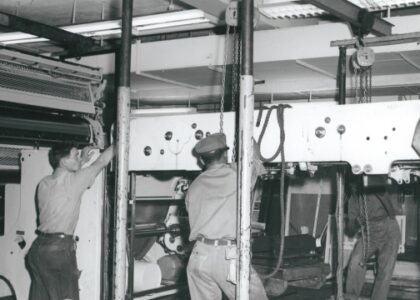In today’s fast-paced work environment, efficiency and accuracy have become more crucial than ever. Companies are constantly looking for innovative solutions to streamline their operations and enhance employee productivity. One technology that has been making waves in the workforce management arena is the clocking in machine. By automating the process of tracking employee hours, these devices are revolutionizing how businesses manage attendance and timekeeping.
In today’s fast-paced work environment, companies are increasingly adopting technologies like Touch Screen Clocking in Machines to streamline their operations and enhance employee productivity.
Clocking in machines simplify the daily ritual of marking attendance, replacing traditional methods that can lead to errors and wasted time. Whether it is through biometric systems, swipe cards, or mobile applications, these machines offer a modern approach to managing work hours. With their ease of use and ability to provide real-time data, businesses can ensure accurate records while also taking a step towards a more modernized workplace. As organizations begin to embrace this technology, the future of work hours is undoubtedly evolving.
Understanding Clocking In Machines
Clocking in machines have transformed the way organizations manage employee attendance and work hours. These devices streamline the process of recording when employees start and finish their work, replacing traditional manual methods that were often prone to errors and inconsistencies. With advancements in technology, clocking in machines now include features such as biometric scanning, RFID cards, and mobile applications, making it easier for both employers and employees to keep accurate records.
One of the key benefits of clocking in machines is the efficiency they provide. By automating the attendance process, companies can reduce the time spent on payroll preparation and minimize the potential for time theft or buddy punching. Employees can clock in and out quickly, allowing them to focus more on their tasks instead of worrying about attendance documentation. This efficiency can lead to improved productivity and a more organized work environment.
Moreover, clocking in machines offer valuable data analytics capabilities. These devices can track attendance patterns, overtime, and punctuality, giving employers insights into workforce management. By analyzing this data, organizations can make informed decisions regarding staffing, identify trends, and improve processes. Ultimately, clocking in machines play a vital role in modern workplaces, aligning with the demands of both businesses and their employees.
Benefits of Modern Time Tracking
Modern time tracking through clocking in machines offers a streamlined approach to managing employee attendance and productivity. One of the most significant advantages is the enhancement of accuracy in recording work hours. Traditional methods, such as manual sign-in sheets, are prone to human error and can be easily manipulated. By automating this process, businesses can ensure precise data collection, which leads to fair compensation and improved accountability among employees.
Another key benefit is the time-saving aspect that clocking in machines bring to both employees and management. With quick and easy access to punch-in and punch-out records, employees can spend less time on administrative tasks and more time focusing on their core responsibilities. For management, these systems simplify the payroll process and provide valuable insights into attendance patterns, which can assist in workforce planning and resource allocation.
Moreover, modern time tracking solutions often come equipped with advanced features such as real-time reporting, mobile access, and integration with other business systems. This level of connectivity allows for greater transparency and collaboration within teams. Managers can monitor attendance trends and address issues proactively, while employees can take ownership of their schedules. Overall, clocking in machines not only facilitate efficient time management but also contribute to a culture of trust and responsibility in the workplace.
Integration with Payroll Systems
The integration of clocking in machines with payroll systems is a game changer for businesses looking to streamline their operations. By automating the time tracking process, these machines eliminate the need for manual data entry, reducing the likelihood of errors and saving valuable time for HR departments. This seamless connection ensures that all recorded hours are accurately captured and ready for payroll processing, allowing for a more efficient workflow.
Moreover, when clocking in machines are directly linked to payroll software, companies can generate reports with ease. Managers can quickly access data on employee attendance, overtime, and inconsistencies, facilitating better decision-making regarding workforce management. This not only enhances accountability among employees but also provides insights into productivity and performance trends within the organization.
Finally, the real-time data provided by integrated clocking in machines can significantly improve payroll accuracy. With immediate updates reflecting clock-ins and clock-outs, businesses can adhere to compliance regulations and avoid costly penalties associated with payroll discrepancies. This integration fosters a transparent and trustworthy workplace environment where employees feel assured that they are compensated fairly for their time worked.
Improving Workplace Productivity
Clocking in machines play a crucial role in enhancing workplace productivity by streamlining the timekeeping process. Traditional methods of logging work hours often involve paper-based systems that can lead to errors and inconsistencies. With automated clocking in machines, employees can clock in and out quickly and accurately, minimizing the chances of mistakes. This efficiency not only saves time for individual workers but also reduces administrative burdens on HR departments, allowing them to focus on more strategic tasks.
Moreover, these machines provide real-time data that managers can leverage to monitor attendance and productivity levels. By analyzing this data, employers can identify patterns related to employee performance, absenteeism, or peak productivity hours. This insight enables organizations to make informed decisions about shift scheduling, resource allocation, and even employee training, ultimately fostering a more productive work environment.
Finally, clocking in machines can boost employee morale by promoting accountability and transparency. When employees know that their time is tracked accurately, they are more likely to take ownership of their work hours and understand the value of their time. This sense of responsibility can lead to higher engagement levels and a culture of productivity, driving overall success within the organization.
Future Trends in Time Management
![]()
As businesses continue to evolve, so too do the methods of tracking and managing work hours. Clocking in machines are becoming more advanced, integrating with biometric technologies such as fingerprint and facial recognition. This shift not only enhances security but also streamlines the clocking-in process, reducing the likelihood of buddy punching and ensuring accurate attendance records. Future clocking in machines will likely include more sophisticated analytics to offer insights into employee work patterns and productivity.
With the rise of remote work, there is a growing emphasis on flexibility in time management. Clocking in machines are adapting to this trend by offering mobile applications that allow employees to clock in from various locations. Such advancements promote a more adaptable work environment where employees can manage their hours regardless of where they are. This flexibility can lead to increased job satisfaction and productivity as workers find a balance that suits their personal and professional lives.
Moreover, the integration of artificial intelligence into clocking in machines is set to revolutionize how organizations manage time. AI can help optimize scheduling, predict peak working hours, and provide tailored reports on labor costs. This technology will empower managers with data-driven insights, enabling them to make informed decisions that enhance overall efficiency. As these innovations unfold, businesses that embrace modern clocking in solutions will likely lead the way in reimagining work hours and increasing productivity in the workforce.






